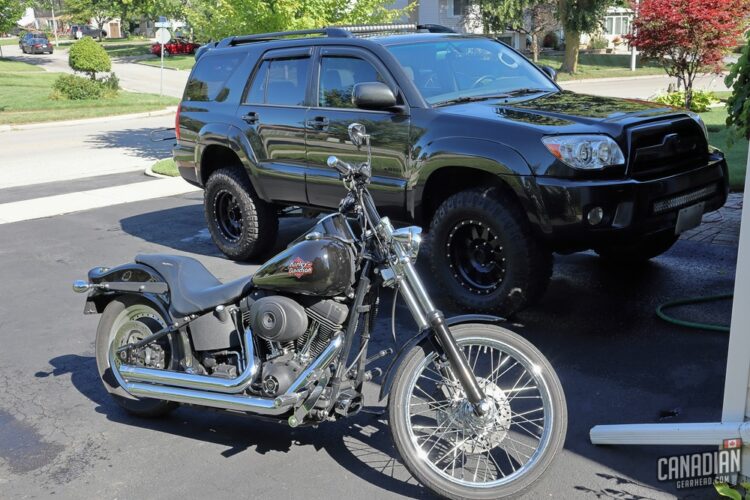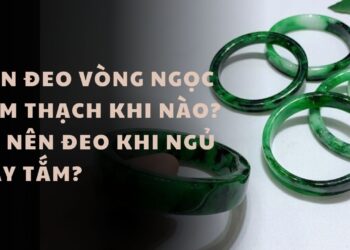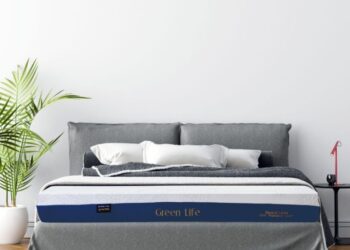It’s been 2.5 years since I began testing out Gtechniq Crystal Serum Light as well as a good chunk of the rest of their product line. I have to admit, it took me a long time to warm up to the idea of ceramic coatings. Following the hype of the latest trendy products isn’t something I normally do. At the time, everyone was talking about how “wax was dead” but I didn’t believe it (and still don’t). Coatings certainly piqued my interest though.
I’ve mentioned before that 2 of my vehicles are ceramic coated but my MR2 will never be. This long term test didn’t change my mind on that. I’ll be sticking with glazes, sealants, and waxes until the time comes to repaint that car. For more on that, check out the video below from the Canadian Gearhead Youtube channel (and don’t forget to subscribe!)
Disclaimer: This is not a sponsored post by Gtechniq. I purchased all of these coatings at full price myself. Every photo in this review was also taken at the time of writing it. These show the current condition of both vehicles accurately.
After seeing many respected detailers choosing to use Gtechniq products, I knew that if any ceramic coating was going to change my mind, it would likely be this one. It was very clear that Gtechniq was not a fly by night company looking to make a quick buck. They do a ton of product testing and development and have a network of accredited detailers around the world.
They also work closely with the Force India (or Racing Point Daddy Stroll as they’re known now) Formula 1 team to come up with coatings that help to avoid the buildup of tar and rubber on race cars. Typically, anything that trickles down from F1 tends to be worth taking seriously – think paddle shifters, hybrid systems, tire compounds etc.

The test vehicles
Although I’ve used Gtechniq coatings on other vehicles during this time, my main test subjects were my personal Toyota 4runner and Harley Davidson Night Train. These 2 vehicles are on the complete opposite end of the spectrum in a few ways.
For starters, I kick the crap out of my poor 4runner. It’s parked outside year round, driven in our salty Ontario winters, taken off-road, used as a daily driver, and left dirty for weeks, sometimes months at a time. It’s a lifted 4×4 SUV and it gets treated like one – not a show truck. If a ceramic coating held up to this abuse, I’d be impressed.
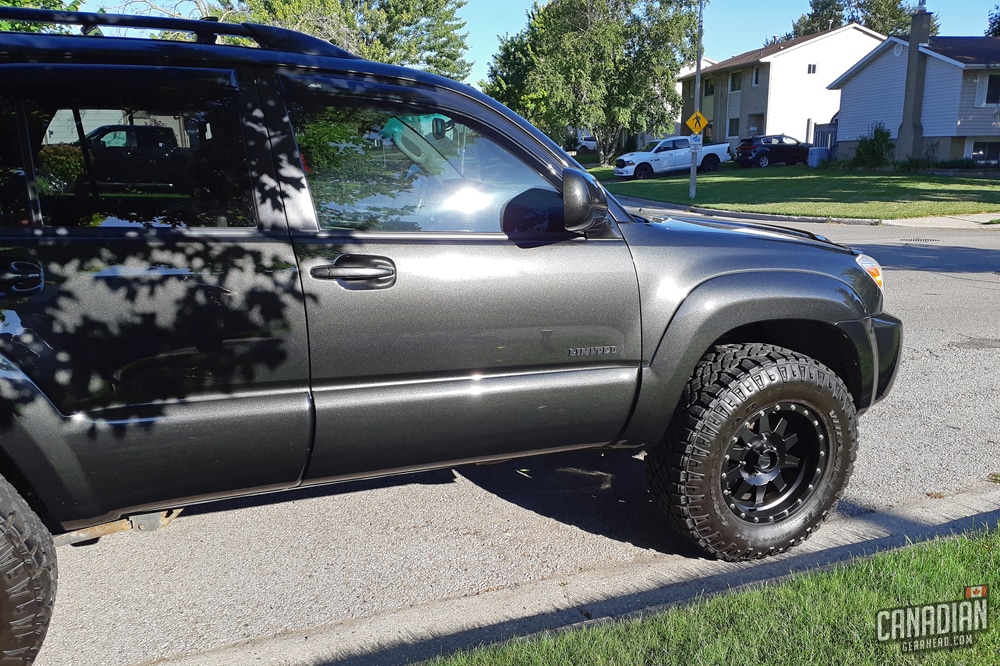
My Harley is the exact opposite. It’s kept clean all the time aside from some bugs and dirt after long rides. It stays parked in the garage and is rarely even ridden in the rain, let alone the winter weather. This bike is pretty well cared for. The black paint is very soft and easy to scratch – and being non-metallic means it shows every little mark. This would be a great test for the coating’s scratch resistance.
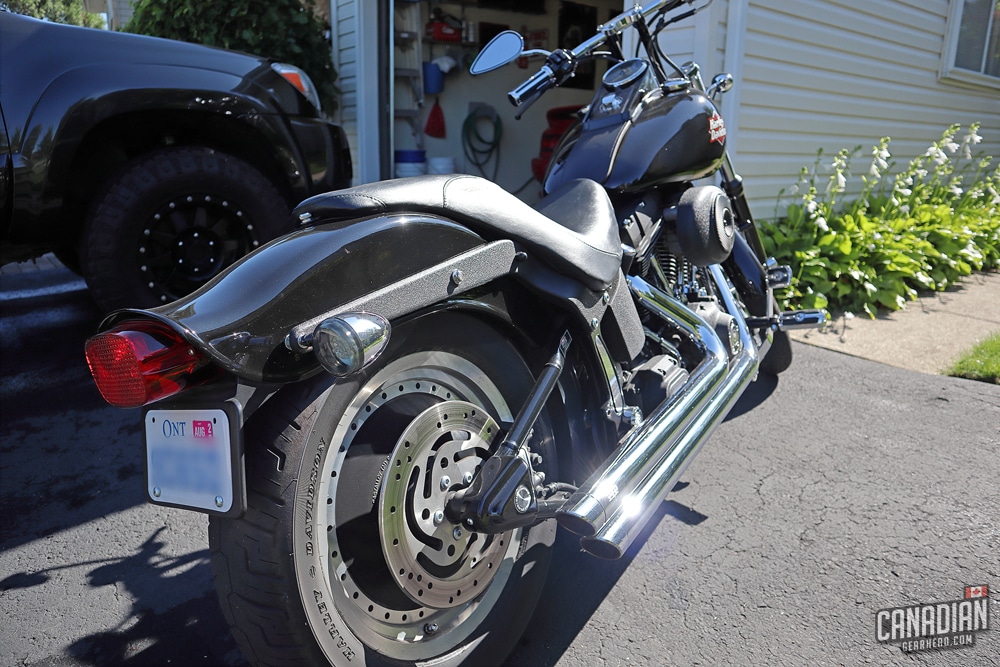
I gave both of these vehicles a full paint correction then applied Gtechniq Crystal Serum Light and Exo V3. This was done close to the same time, by the same person, in the same conditions. The way these coatings held up after 2.5 years is somewhat different though.
Starting condition and preparation for coatings
Before applying any ceramic coating, it’s imperative that you perfect the condition of the paint as much as possible. With that said, 100% perfection is rarely achievable for the average vehicle. While both the Harley and 4runner look amazing in real-world lighting conditions, they were never completely free of scratches from the get-go.
The 4runner was 10 years old at the time with over 200,000 kms and had likely never been polished. The original owner was a lawyer and I could tell she had it detailed regularly.
The 2nd owner (who I bought it from) was a young guy that only owned it for about a month. The paint had a lot of scratches and some pinstriping from tight off-road trails when I got it. I think we can assume which of the 2 previous owners was responsible for that.
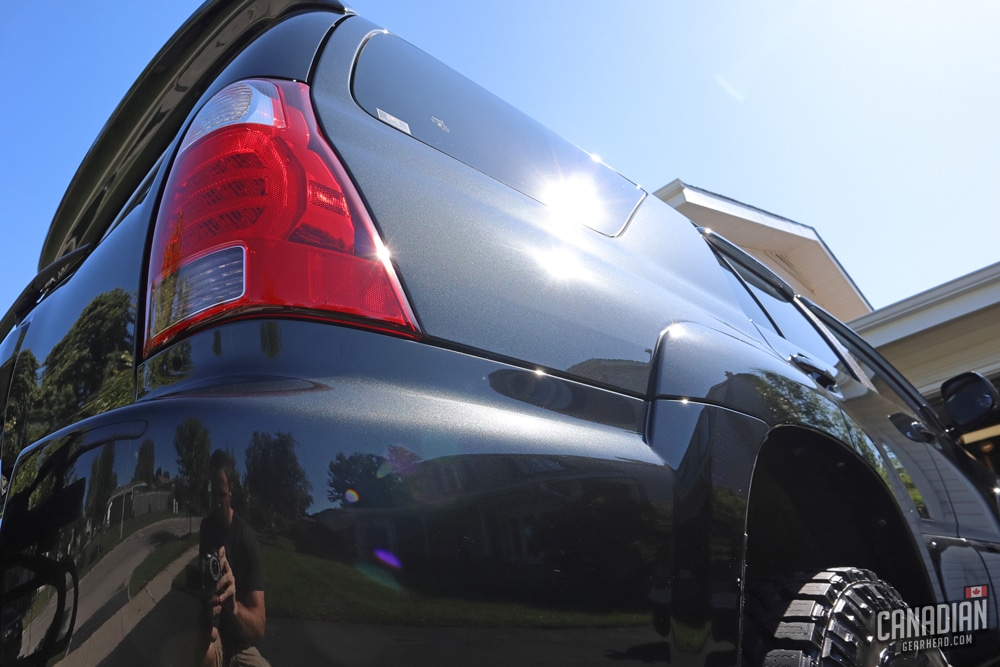
It took a pretty in-depth paint correction to get the 4runner’s appearance to what I’d consider “acceptable”. I chose to retain as much of the factory clear coat as possible rather than chasing perfection and removing every scratch.
I knew I wasn’t always going to be kind to this thing so longevity was far more important than a show car finish. With that being said, the 4runner looked really, really good when I was done.
The Harley was 15 years old when I corrected and coated it. I don’t know a whole lot about its history, other than the fact that I bought it from a guy in Missouri after winning an eBay auction. It had been somewhat well kept for an “average” person, but not babied.
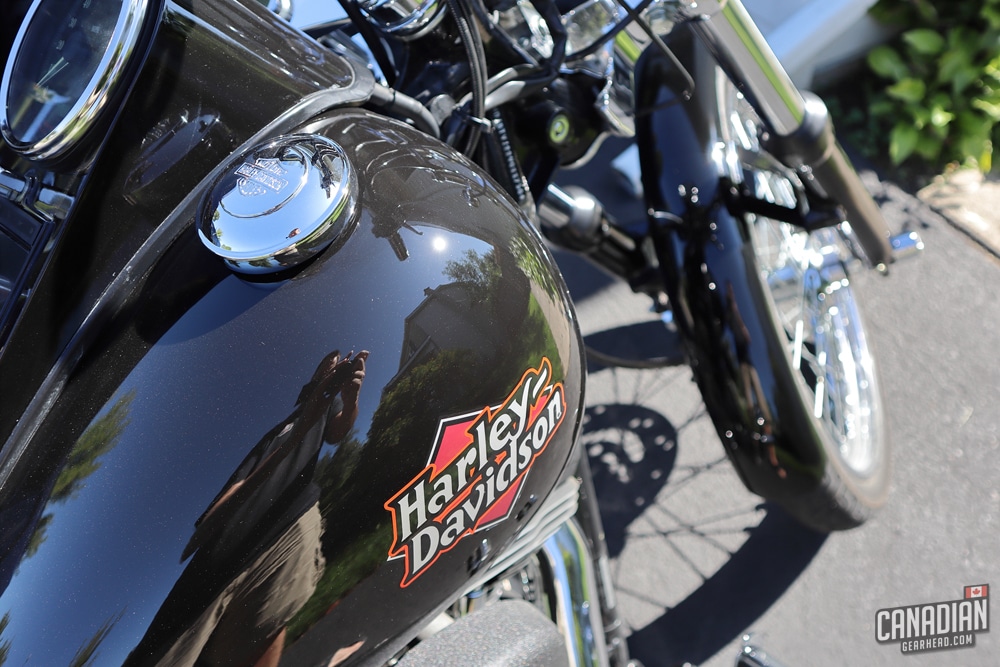
The paint was in decent condition with the exception of some deeper gashes on the rear fender that weren’t safe to remove completely. I was able to boost the condition of this regular old Harley to the point where people pay me compliments nearly anywhere I park it. It too looked really, really good when I was done.
How to apply Gtechniq Crystal Serum Light and Exo V3
Gtechniq Crystal Serum Light is considered a “prosumer” grade product. This is available to anyone and can be found at most detailing supply stores. You can also purchase it online here. In contrast, Crystal Serum Ultra is their professional-only coating that is only available to their accredited detailers.
To become one of those accredited detailers, you need to prove to them that you know what you’re doing. The reason for this is because the coating is stronger and more difficult to remove should something go wrong with the application. CSL can be removed by compounding. CSU usually requires wet sanding.
Although Gtechniq sells CSL to the general population, it isn’t necessarily beginner friendly. Unlike the claims that some of the cheap DIY coating companies make, applying a coating isn’t something anybody can do – at least not well. Preparation is key and requires at least some knowledge of paint correction. You’ll also need really good lighting and a clean environment to work in.
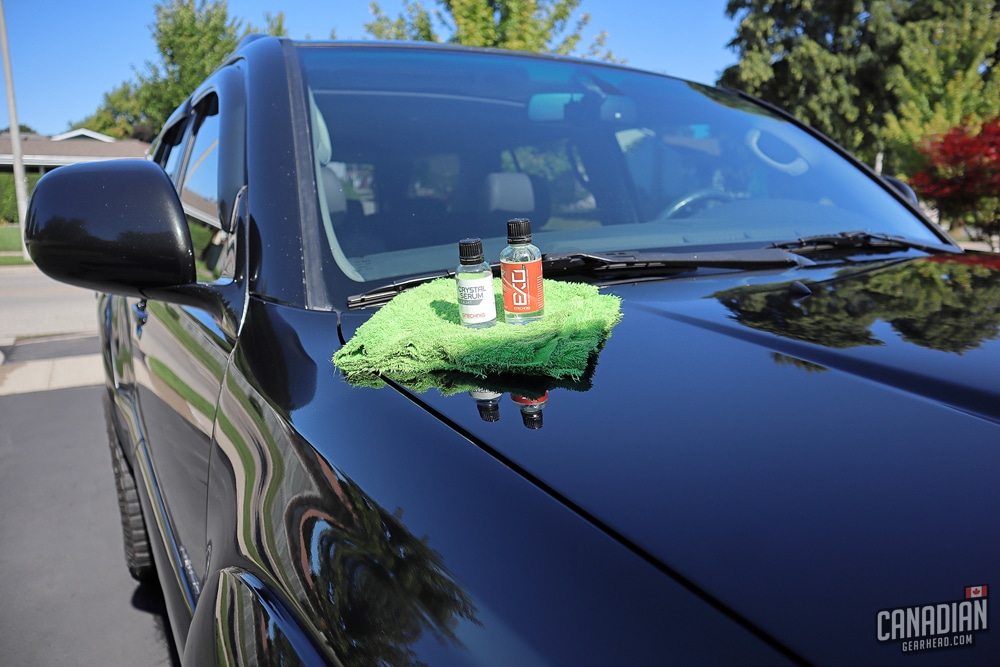
High spots are the biggest concern if you get things wrong. Sometimes they can be fixed if you catch them early enough. Most times they’ll need to be repolished and recoated. This is something that gets downplayed by the “ceramic coating is easy” crowd.
Yes, the concept is the same as waxing – apply it and wipe off the excess. But I’m willing to bet that those peoples’ vehicles will have high spots and areas of uncorrected paint if you look at them in the right lighting. Applying a coating properly takes patience, time, and quadruple checking your work from different angles and different lighting. It’s not as simple as wax on, wax off. Check out the video below to see how I apply Crystal Serum Light and Exo V4 on a brand new Harley Davidson:
Now with that said, compared to other coatings on the market, Gtechniq’s products are probably among the easiest to apply. Other coatings require precise timing before buffing off the excess. Sometimes they can be sticky and a pain to wipe off. Some coatings even require infrared lighting to cure them properly.
In comparison, Gtechniq Crystal Serum Light and Exo are much more straight forward to apply. These coatings are meant to be a 2 layer system. Crystal Serum Light is the base coat that provides the majority of protection and scratch resistance. The layer of Exo on top provides the hydrophobic properties (water beading) and some extra gloss.
Either one of these can be used on their own, but they’re far better together. Crystal Serum Light doesn’t have very good water behavior on its own and Exo by itself doesn’t last as long or offer as much protection. Put them together though, and you have arguably the best DIY ceramic coating on the market.
Application Procedure:
After correcting the paint, wipe it down with Panel Wipe to remove any leftover polishing oils.
Then put a few drops on an applicator – you might want to saturate it with a bit extra on your first pass, but after that, a little goes a long way. I tend to break the vehicle down into smaller sections at a time. A line of dots on the applicator should be the right amount for a fender or half a door.
Apply it with a crosshatch pattern and focus on getting thin, even coverage on the section you’re working on. I find 2 passes seems to be enough to get a nice even layer, but keep going until you feel it’s spread out well.
How long do you need to let Crystal Serum Light sit before you wipe it off?
There’s actually a cool way of dealing with this – when you first wipe CSL on, you’ll see a series of straight lines that look like smear marks. Wait until those turn into rows of dots (like beads of sweat), and that’s when it’s ready to be removed.
This helps to take any guess work out since the exact time will be different depending on the heat and humidity you’re working in.
For removal, I like to switch out between 3 different towels:
- Towel 1: Initial wipe, will usually smear the coating around a bit
- Towel 2: This one does the bulk of the removal. Work further out onto nearby panels to make sure you didn’t leave some on there by accident
- Towel 3: Final inspection, accompanied by a good light source to look for potential high spots. Now is the time to deal with them, otherwise you’ll need to polish and start over again on that section.
Gtechniq says you need to wait a minimum of 1 hour for Crystal Serum Light to cure before applying a layer of Exo. Some people recommend waiting overnight before adding the Exo layer but it isn’t mandatory. It’s worth noting that the longer CSL is allowed to cure, the more it’s going to want to reject the Exo coating (it’s chemical resistant after all, and it doesn’t know that we want Exo on top!)
Exo is applied the exact same way as Crystal Serum Light. There is one difference though – with CSL, we’re applying it onto bare paint. Exo however, is going on top of a protective coating. It will need to be worked in a bit more, and it’ll be more likely to smear around rather than be picked up in your towel.
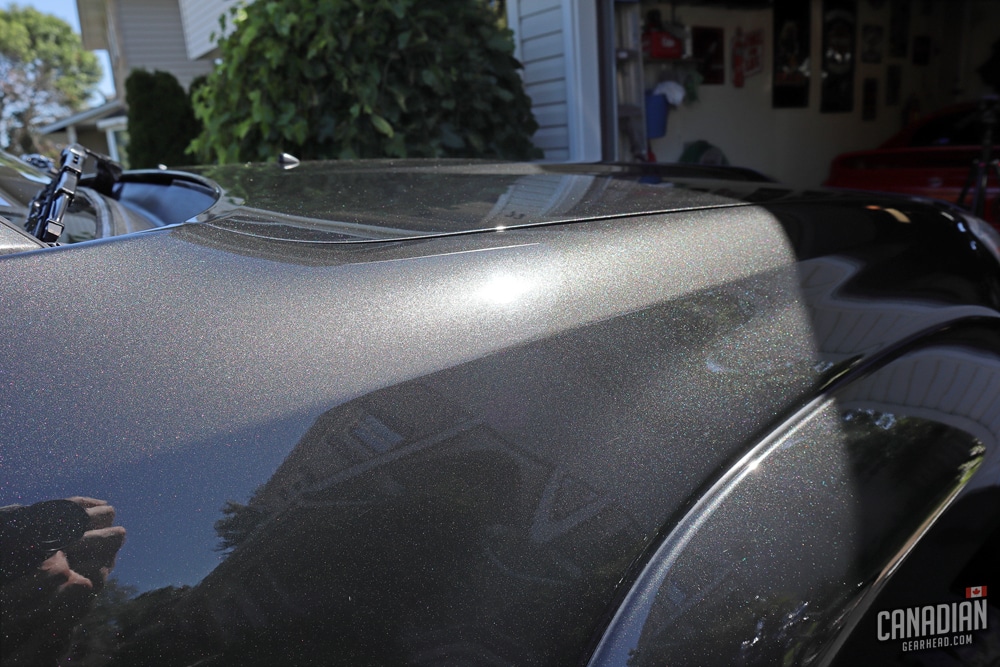
This is still manageable though. My general rule is to double the number of passes I did when applying CSL to really work it into the surface. Removal just takes more time, more wiping, and you’ll likely need to swap out your towels to clean ones more often. Because of all this, I would say that Crystal Serum Light is easier to apply than Exo, but I wouldn’t call either of them difficult.
Remember, inspection is super important when applying a ceramic coating. Don’t rush it. You need to check your work a few times with different lighting sources (bright, diffused lighting is best for coatings), and many different angles.
Potential high spots like to hide until you pull the vehicle out into the sun, then BAM. So take your time and get it right. This is the key to getting professional level results with a DIY ceramic coating.
Fixing high spots in Gtechniq Crystal Serum Light or Exo
In my experience, high spots are able to be fixed without too much of a struggle. It does waste time though so you still need to avoid them as much as possible. Sometimes you can get lucky if the coating hasn’t had much time to cure and get away with just wiping them off (a little Panel Wipe might help).
Chances are they’ve been left on there while you finished the rest of the vehicle though, and unfortunately, that’ll require backtracking in the process.
I like to keep my Rupes iBrid Nano on standby when I’m applying a ceramic coating for this exact reason. With a yellow polishing pad and a mild polish like Meguiar’s M205, I can easily knock the high spot down.
If I’m able to get it out with a quick pass at a low speed, that might mean that I’ve been able to take just the peak of the high spot off leaving the rest of the coating untouched. No further steps are necessary in that case although it doesn’t happen very often.
More than likely, you’ll need to polish the coating right off in that section, then start from scratch by reapplying the coating. This is a bummer, but not the end of the world.
In the worst case, you’ll see a line of demarcation showing where your “repaired” section starts and ends. If that happens, the only solution is to remove the coating from the complete panel and start again. It’s not the end of the world, but again, it’s time consuming.
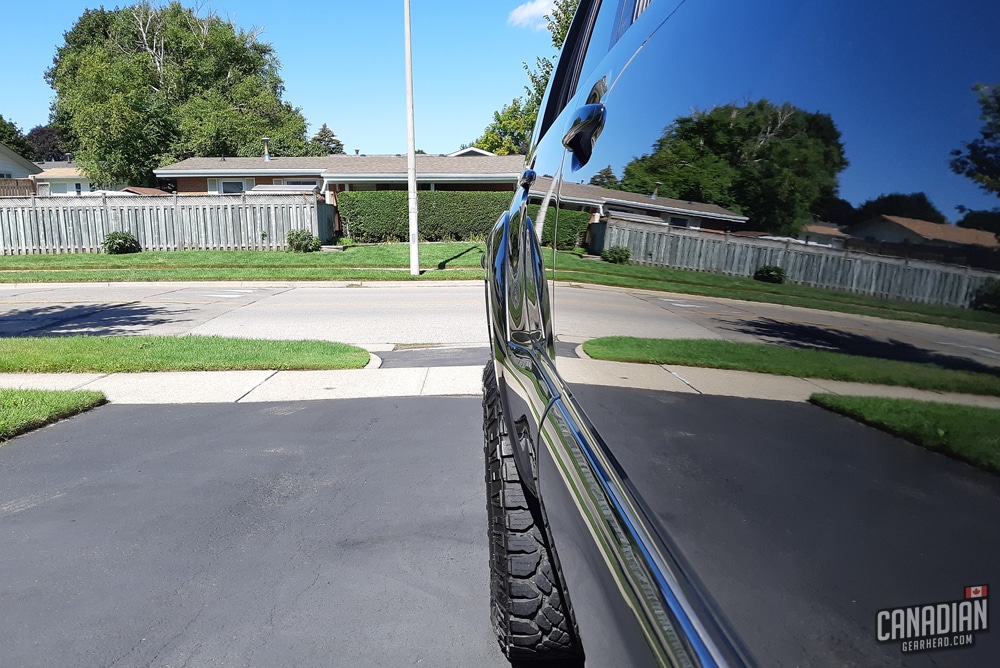
Gtechniq Crystal Serum Light + Exo appearance and feel
One of the biggest complaints about ceramic coatings when they first became popular was their appearance and feel compared to a wax or sealant. Waxes are known for feeling extremely slick while offering high levels of gloss and crisp, deep reflections. Some coatings just didn’t measure up in this department and featured a rather dull, synthetic look and were grabby feeling.
One of the things that made me decide Gtechniq’s coatings had the best chance of convincing me to make the switch was their look and feel. Many people were raving about it online and I could tell even in some of the pictures I saw that they didn’t look like typical coatings.
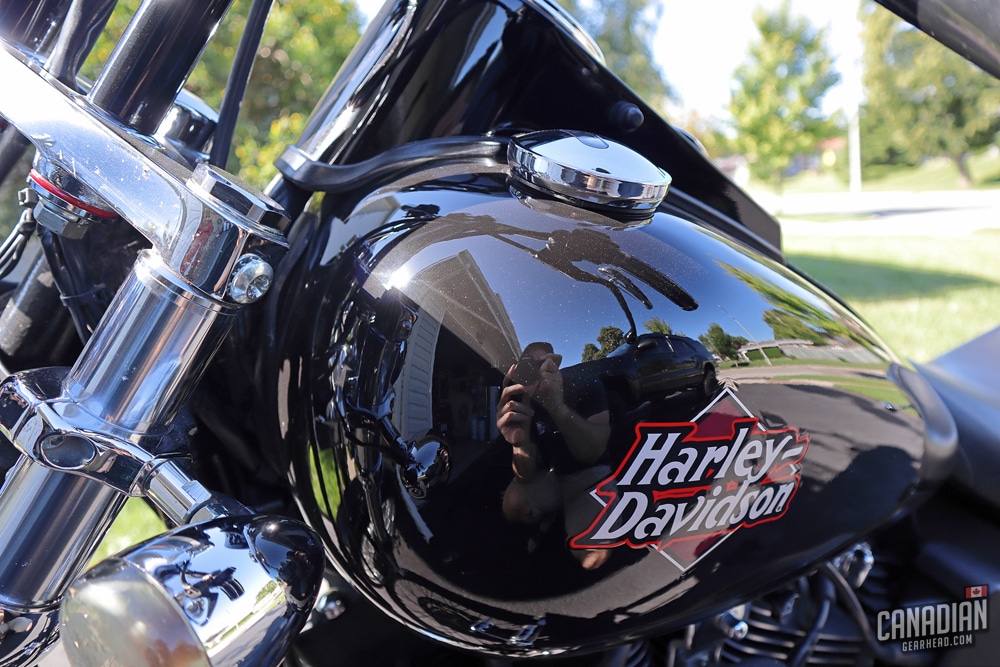
Now having tried them myself, I can say that they absolutely live up to the hype. Is the look and feel as good as a high quality carnauba wax? Not quite. But it’s certainly nothing worth complaining about.
Especially after a proper paint correction, the paint looks absolutely gorgeous with deep, wet reflections – even years after application. The average person wouldn’t be able to tell the difference between the appearance of this and wax.
Longevity and real-world performance
Let’s take a moment to talk about the things ceramic coatings excel at, at least according to their marketing. The biggest thing we’re sold on is protection. Next up is scratch resistance. We’re also told that the vehicle will be easier to clean, possibly needing less attention. We are promised dramatic water beading. Another big claim is that we’ll never have to wax our car again.
Is any of this actually true? I’m going to break each one of these characteristics down and share my real-world experience after 2.5 years of living with Crystal Serum Light and Exo V3.
Protection against chemicals and other contaminants
This played a big role in convincing me to coat my 4runner since I knew I’d be neglecting and abusing it. It sits outside and is often left dirty for a long period of time. I was hoping for some peace of mind knowing that any contaminants left on the paint wouldn’t be eating right into it over time. So did the Gtechniq duo do their job?
Yes and no. I didn’t have any cases where bird droppings or bugs were able to etch into the clear coat. In comparison, I’ve had exactly that happen with my old Grand Cherokee which was treated the same but wore a traditional polymer paint sealant. This is a noticeable advantage.
One thing I must admit though is that I found I was much more likely to remove any contaminants ASAP without giving them too much time to sit on the surface. Being concerned with protecting the coating has been in the back of my mind this entire time. I’ve been a bit paranoid about protecting my protection, as silly as that sounds.
Keep in mind that I applied these coatings myself so my only cost was the price of the materials. I would imagine if you paid someone hundreds of dollars to coat your vehicle, this feeling would be amplified a lot more.

On the subject of chemical resistance, I have to talk about Exo V3 and its durability (or lack thereof). This has been my biggest disappointment when testing these coatings.
My 4runner gets dirty, whether it’s road salt built up in the winter or dirt and mud in the summer. So occasionally, I would pre-spray it down with a mild all purpose cleaner (diluted no stronger than 10:1) to help break down the dirt and grime before scrubbing it with a mitt.
If your vehicle is coated with Exo V3, do not do this! After less than a handful of washes, the strong cleaner all but stripped off the topcoat, leaving the Crystal Serum Light to fend for itself alone. Water beading was non-existant from that point on. Washing it after this was like washing an unwaxed car – the water just pooled on top with zero beading.
This happened within the first year of the coating’s life. It’s good to know that Crystal Serum Light stood its ground and wasn’t phased by the stronger cleaner at all. It’s still going strong to this day. Exo V3 however, just can’t handle that type of aggression and might even need to be reapplied over the coating’s lifespan.
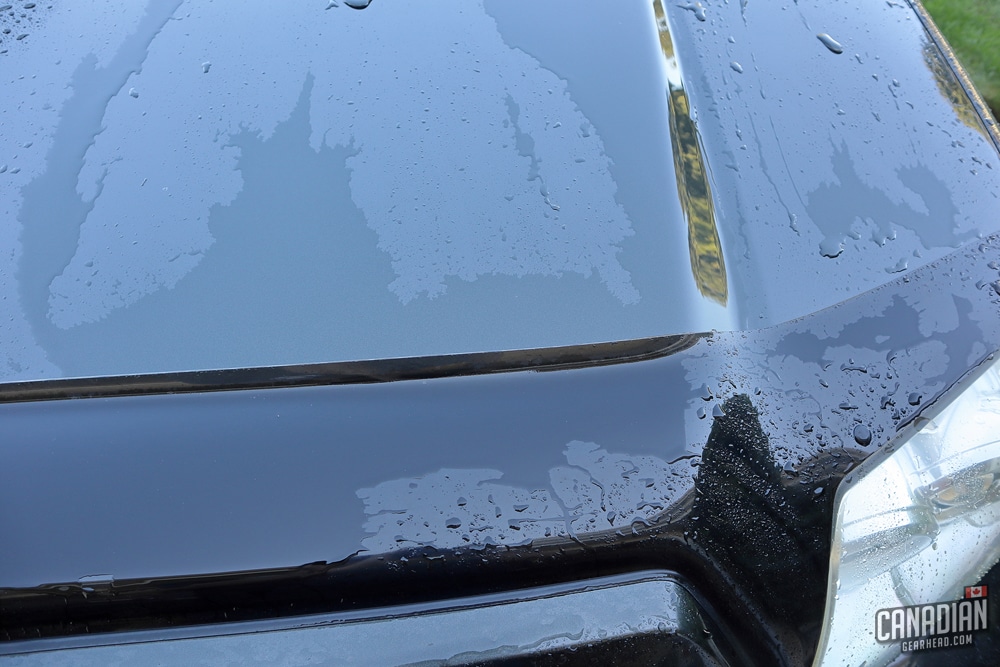
I don’t blame Exo entirely for this failure. It was partly my fault for being too rough with it (I wanted to test it, after all). I’ve learned my lesson though. Going forward, when a vehicle tends to get dirty – break the pressure washer out and attack it that way.
It’s also safe to say that the drive-through tunnel car washes that spray acid on your car will certainly give Exo a beat down too. So keep it clean and stick with proper hand washes.
It’s worth noting that Exo isn’t supposed to be in charge of chemical resistance – that’s Crystal Serum’s job and it does it well. Exo is in charge of water beading and that can definitely be affected by chemicals.
Is it the end of the world? Not really. Your paint is still protected. You’ll just be missing out on those fancy hydrophobic characteristics if the top layer is hurt. So think of Crystal Serum as a tough ceramic coating and Exo as more of a “super sealant”.
In contrast, Exo V3 has held up perfectly fine on the Harley. The only difference is that I haven’t used any strong cleaners on it. Just a rinseless wash. I would assume the 4runner coating would be in similar condition too, had I not used an all purpose cleaner on it.
Protection against UV rays
This is a hard one to test in the real world. One thing I can tell you though is that I’ve been using CSL to protect headlights after removing the original UV coating and restoring them. Leaving the plastic lens bare after sanding and polishing them will cause them to turn cloudy and yellow again in about a week.
Using a polymer paint sealant tends to prolong it by a month or so. Using this coating seems to make them last much longer which I assume is a testament to some form of UV protection.
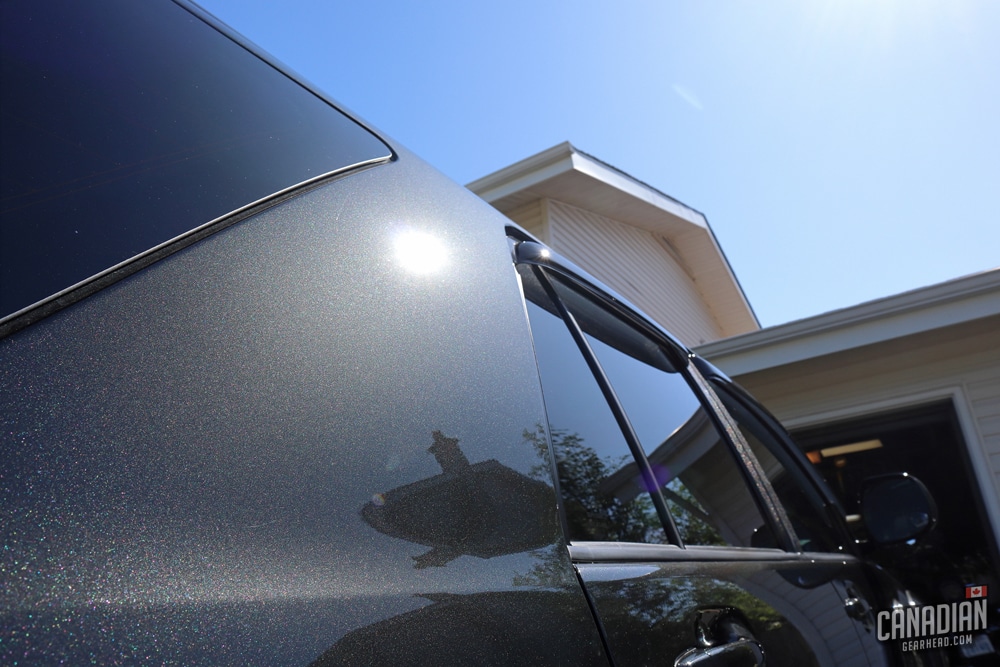
Scratch resistance
A big thing to mention here is that no ceramic coating is scratch proof (including Gtechniq). Applying a product like this doesn’t mean you can treat your paint however you want and avoid scratches. The scratch resistance you get from a coating like this will help to prevent or postpone wash marring and minor swirl marks from appearing.
The same swirl marks that would show up 1 year after a paint correction on a waxed car might take 3 or 4 years to appear on a coated car. With absolutely perfect wash techniques, you might be able to avoid light surface scratches indefinitely. But on an all-weather daily driver, that’s a bit of a lofty goal.
In my experience, I’ve found Crystal Serum Light’s performance in terms of scratch resistance to live up to their claims. As a matter of fact, I’m a bit surprised at how well my 4runner still looks years later.
Of course, in a dark garage with high powered paint correction lighting, there will certainly be some new scratches and marks showing. But in real-world lighting conditions, it honestly looks like it’s been freshly polished. I love that.
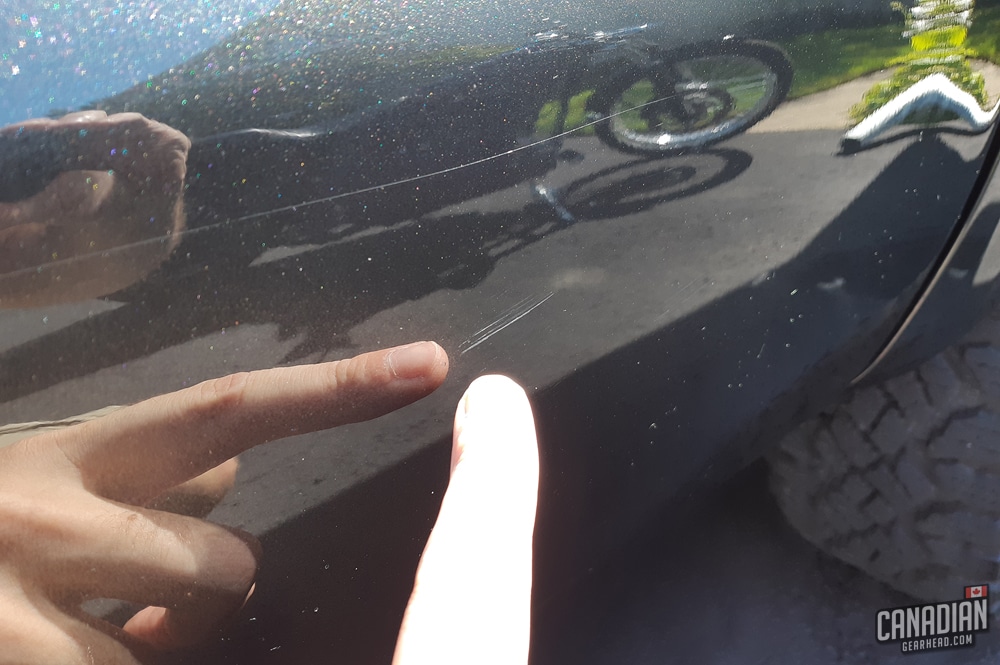
I also have a few new deeper scratches from parking lots despite always parking far away (people suck). This proves that my statement regarding scratch proof vs scratch resistant is true. I can’t help but wonder though, would these scratches be even deeper and more noticeable without the ceramic coating? I guess we’ll never know.
The black paint on my Harley was a great test for Gtechniq’s scratch resistance. It’s soft and easy to scratch – and if there are any marks, you better believe that it’ll show them. Protecting this bike from scratches is a lot to ask of any product. I’d say that in this case, Crystal Serum Light did a great job. The larger sections still look great with very few scratches showing.
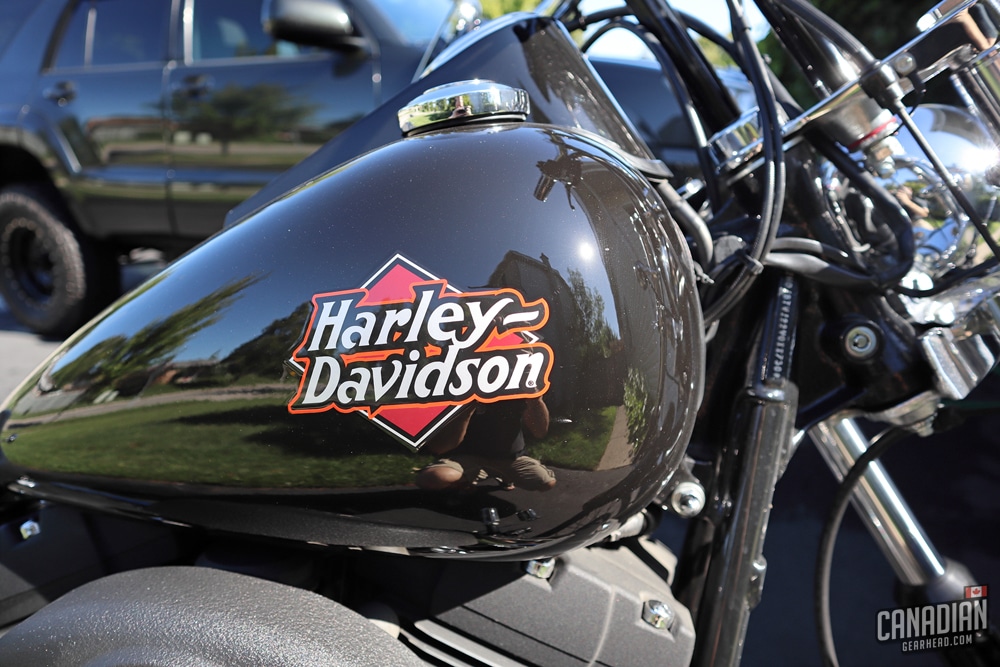
There are swirl marks in some of the tighter areas but I’m not sure I can place the blame on the coating. I didn’t own the Rupes iBrid Nano back when I polished this bike years ago, so there were certain areas that just weren’t possible to reach with a larger pad. I’m fairly certain those scratches have always been there.
There have been times while riding where I notice that my leg rubbed against the tank for a brief second. My first thought is always “oh no!” and yet the next time I wash the bike, there are no scratches to be found. Situations like that are a big bonus when ceramic coating a motorcycle.
Ease of washing
Perhaps the biggest benefit to ceramic coating a vehicle is how much easier it is to clean up. This is not to be confused with never having to physically wash it, which is one of the many myths out there regarding coatings.
The difference is that simply spraying water at the paint goes a much longer way than if the vehicle is uncoated. Do you still need to follow up with soap and a mitt of some sort? More than likely 90% of the time. But it’s quite remarkable how much you can get done with just a pressure washer.
I’m no stranger to having dirt and mud splattered on my 4runner. Before the coating, this would take a ton of pressure washing and scrubbing to get off. Sometimes it even took a couple of washes to get rid of any leftover staining from mud spots. Not anymore. A thorough pre-rinse followed by a regular wash is all it takes to make it look new again.
Bugs are the most common thing to have to clean off the front of a motorcycle. Depending on how hard the farmers pour the sauce on the fields at the time, we get a lot of them on our Ontario highways.

Bugs can be a bit of a pain to clean off especially if you leave them for a while. With the Gtechniq coatings, not only are they much easier to remove (and less scrubbing means less scratching) but sometimes the surface is so slick that the bugs are deflected instead of splattering right away.
I’ve also had the front end of the 4runner covered solid with bugs after driving home from the beach at night. I thought it was going to be a nightmare to clean them off but it really wasn’t bad at all. That was a relief.
I had heard that cleaning ceramic coated vehicles was easier but wasn’t expecting this much of a difference. I’m pleasantly surprised. The way the coating rejects any contaminants that want to stick to the surface is impressive. They’ll probably still be on there, but they come off easily rather than bonding to the paint.
One thing a ceramic coating won’t do though is keep your vehicle from getting dirty in the first place. This is another myth. If you drive in the rain, dirt, mud etc, it’s still going to get dirty. It’s just much less of a headache to clean up afterward which makes these coatings worthwhile.
Hydrophobic properties: water beading AND sheeting?
This is a fun one and probably the thing that sells coatings the most. Exo is in charge of this department and it does a fantastic job. Better than most of the other ceramic coatings I’ve seen on the market. Gtechniq stands out from the crowd here in one major way: their coating both beads and sheets water, giving you the best of both worlds.
Although water beading doesn’t necessarily indicate that the paint is protected, it’s been used to judge different waxes, sealants, and ceramic coatings for many years. It’s what sells these products. People love to see nice tight beads of water on their car while they’re washing it or when it’s raining. Most ceramic coatings offer the wildest water beading out there.
There’s a downside to water beading though. You may have heard many people complain about dealing with water spots on coated vehicles. This is a side effect of water beading.
Imagine your car got hit by a sprinkler that uses tap water. The coating does its job and the water forms pretty, uniform beads on the surface. Then the sun comes out. Those beads that everyone desires so much have now turned into tiny magnifying glasses. Combined with the sun, they dry the minerals in the water onto the surface, leaving watermarks. If left for too long, these can etch into the paint and require polishing and redoing the coating.
Water sheeting, on the other hand, causes water to evacuate the surface rapidly instead of staying and forming beads on top. Beads might make for cool looking pictures, but in reality, we just want the water gone ASAP.
Exo does a really good job of this and I believe it’s the reason why there are nowhere near as many complaints about water spots with Gtechniq’s coatings compared to the others.
It seems that the coating’s decision to bead vs sheet is based on how the water is sprayed on the panel. Light rain or a shower setting on a garden hose typically result in beading. As soon as the pressure gets stepped up, the water begins to sheet really fast. You can tell it doesn’t want to stick to the surface at all. This is pretty cool stuff.
Crystal Serum Light longevity – will you really never have to wax again?
A big selling point for ceramic coatings is not having to wax your car ever again. Technically, this is true. That’s exactly how I treated both the 4runner and Harley up until now. I’ve done nothing but wash them. I’m not sure that sticking with just washing alone is the best idea if you want your coating to last though.
To be clear, using traditional carnauba wax, spray wax, or polymer paint sealant on top of your ceramic coating is not recommended. Every characteristic of the coating is much better than any of those – so to cover it up with an inferior product is simply a waste of time.
No, wax won’t hurt your coating. It’s meant to stand up to far worse things than that. But it’s unnecessary and can potentially cause issues with streaking or haze from the coating rejecting the wax (aka doing its job).
As ceramic coatings have gained in popularity, new products have been created to help care for them in the form of SI02 toppers and detail sprays. These can be used in either a wet or dry application. The idea here is to boost the protection and lifespan of the coating underneath by using one of these spray-on products periodically.
Of course, Gtechniq recommends using their C2V3 spray with Crystal Serum Light and Exo. I’m normally a fan of staying within a product line to ensure each one plays nice with each other, but I haven’t actually tried this one myself.
Gtechniq Crystal Serum Light maintenance
I decided to jump on the P&S Beadmaker bandwagon because of its ability to work on both waxed and coated vehicles (remember, my MR2 is not coated). I’ve been using it as a drying aid after washing and applying a very small amount.
So far, I’m extremely happy with the results of this Gtechniq/Beadmaker combo. As a matter of fact, Beadmaker has almost completely restored the water behavior on the failed 4runner coating with a single light application! I’m going to continue testing these products to see how they work together but so far I’m very impressed.
What soap to use with Gtechniq coatings
Speaking of the wash process, let’s talk a bit about soaps and shampoos. Again, there are plenty of ceramic coating specific soaps available.
The widely accepted rule is that you don’t want to use a soap that contains any wax or gloss enhancers. In my opinion, this is blown out of proportion a bit. Any wax or gloss enhancer left behind by a soap is so minor that it’ll likely disappear after sitting in the sun for a few minutes.
If you want to follow this rule though, feel free to stick with a ph-neutral soap like Meguiar’s Gold Class or Griot’s Car Wash (there’s a whole list of other good soaps out there). Gtechniq offers one called GWash. That would be your absolute best bet for a soap that will work perfectly on Crystal Serum Light and Exo.
Personally, I have a bit of an alternative technique when it comes to washing ceramic coated vehicles. I like to use Optimum No Rinse (the blue one, not the green one with wax). I’ll usually pre-rinse with the hose or pressure washer for safety, then use ONR with either a mitt or multiple towels.
ONR might contain some gloss enhancers, but I’ve never seen a bad reaction from it. As I mentioned above, I’ve been following up with Beadmaker as a drying aid lately and despite coming from different companies, all of these products seem to work great together.
How long does Crystal Serum Light last in the real world?
Gtechniq CSL is rated for a 3-5 year lifespan. How long it lasts depends greatly on how the vehicle is treated during that time. In the case of both the 4runner and Harley, CSL is still going strong at 2.5 years. I have no reason to believe it won’t make it well into that 3-5 year period.
Any issues I’ve had with longevity have been with Exo, which makes sense – it isn’t designed to be as strong of a product as Crystal Serum Light.
Exo is rated to last 18-24 months. That means there is a chance you might need to reapply it during the lifespan of Crystal Serum Light. That’s something that doesn’t seem to be talked about much online.
In theory, you should be able to apply a fresh coat of Exo on top of an existing layer of CSL. After some research, I’ve even found claims that CSL can withstand a very light machine polish to confirm that any old Exo has been removed without diminishing the coating below.

One key tip regarding getting the longest life out of these coatings is to try to keep them as clean as you can. Both of these seem much happier when they’re kept clean and regularly maintained.
Leaving them dirty and neglected over long periods of time tends to diminish the hydrophobicity and gloss. Just a couple of routine washes later though, and they’re right back to normal again. So try to stay on top of washing and use a coating friendly topper or detail spray every once in a while. This should help you to get the most bang for your buck.
So are Gtechniq Crystal Serum Light and Exo worth buying?
After living with these coatings on 2 very different vehicles for 2.5 years, my opinion is that these are among the best prosumer ceramic coatings on the market. They do exactly what they’re advertised to do. Unlike some manufacturers, Gtechniq doesn’t make ridiculous claims in their marketing – although they do mention a “9h hardness” rating which in my opinion doesn’t actually mean much.
Both vehicles have been much easier to clean, less likely to suffer minor scratches and in general, remained looking glossier for longer.
Crystal Serum Light vs. Crystal Serum Ultra
This might be an unpopular view, but I personally don’t see a need for Crystal Serum Ultra (their professional-only coating rated to last 9 years). My reasoning for this is because when vehicles are driven, they’re bound to get scuffed and scratched over time.
The chances of going 9 years without needing to polish the paint are very slim in the real world. So if I’m going to need to repolish my car after 5 years in order to keep it looking great, what good is a coating that lasts for 9?
I’m afraid that some of these companies have gotten so caught up in competing with each other that they’re offering us things we don’t actually need just to one-up each other.
I think a light polish followed by reapplying Crystal Serum Light every 3-5 years is a fantastic regimen that will keep a vehicle looking new for decades. A stronger product really doesn’t seem necessary based on how I’ve seen these perform.
Gtechniq states that Crystal Serum Light is 80% as good as Crystal Serum Ultra. Is a 20% increase in performance really worth having to pay a professional $1,000+ to apply Ultra rather than applying CSL yourself? I’m just not convinced.
I’m not saying this because I think Ultra is a bad product, I’m saying it because I think CSL is that good. DIYers are lucky to have access to such a great coating without having to be accredited.
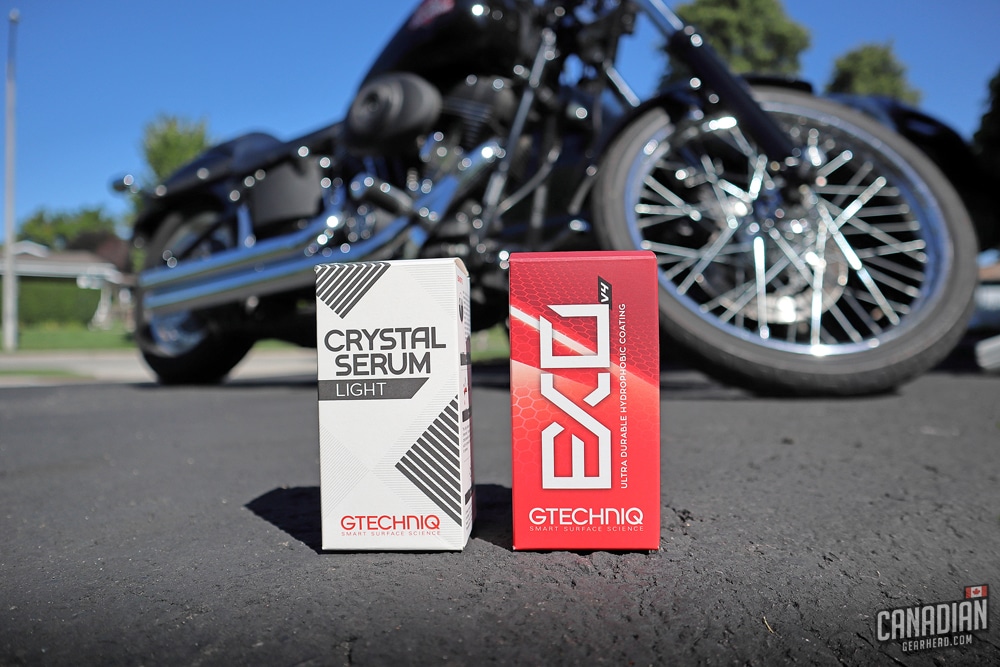
You’ll notice that I specifically referred to Exo as “V3” throughout this review. I want to make sure it’s clear that was the version I used. It was the current version at the time I purchased it, but since then, Gtechniq has improved Exo and released V4.
I had to laugh when I read the updates they had made, knowing what my complaints were with V3. They’ve already addressed everything I didn’t like about Exo V3 before I even had the chance to share my experience.
To quote Gtechniq: “It has a consistent film that is more durable and resistant to road salt and wash chemicals than its predecessors. Application is easy, with a slow flash-off time, giving more time to achieve a perfect finish.”
Now, I can’t say whether V4 lives up to these claims yet. It’s too soon for me to tell. I have applied it to a few vehicles though and it does indeed seem to be easier to work with than V3. I’m excited to see any improvements in longevity as that was really my only gripe with this coating.
This is Part 1 of a multi-part series of long term Gtechniq reviews. Stay tuned for Part 2 (Gtechniq C4 Permanent Trim Restorer and C5 Wheel Armour) coming soon!

